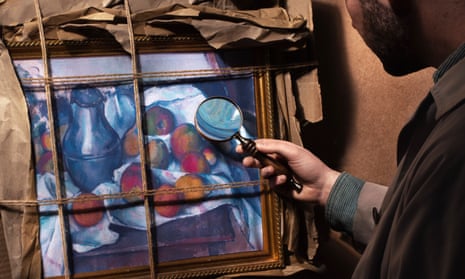Surrounded by so many treasures, who would notice if a handful went missing? For many years, nobody did. A Hellenistic gem. A Roman ring. The losses have silently mounted up. To anyone behind such thefts, it must seem like an undetectable and, perhaps, even a victimless crime. After all, nobody had noticed any items were gone. Until, one day, they did.
On 16 August 2023, the British Museum made an announcement. Items from the museum’s collection were “missing, stolen or damaged”, it said, adding: “A member of staff has been dismissed.” The scale of any crime was unclear, but a brief description of the missing items hinted at the significance of the discovery, referencing “gold jewellery and gems of semi-precious stones and glass dating from the 15th century BC to the 19th century AD”. Museum chair George Osborne appeared keen to move on quickly, describing the “decisive action” the institution had taken and concluding: “We’re determined to right the wrongs and use the experience to build a stronger museum.”
Over the subsequent weeks, however, more shocking details emerged. The sacked member of staff was a senior curator, later named as Dr Peter Higgs, who had worked for many years in the museum’s Greek and Roman antiquities department.
The museum has sued Higgs in the high court in London and in March he was ordered to list or return any stolen items. Higgs, who disputes the claims, did not attend the hearing due to poor health, and while the Metropolitan police are investigating the alleged thefts, it has not charged anyone in connection with the missing artefacts.

An antiquities dealer revealed he had raised the alarm back in February 2021, after acquiring artefacts on eBay for remarkably low prices and becoming suspicious about the seller’s identity. His concerns prompted the museum to launch an internal investigation, which mistakenly concluded nothing was amiss. Osborne later revealed that up to 2,000 items were missing or damaged. Long-simmering rows over the restitution of treasures, including the Parthenon Sculptures and the Benin bronzes, erupted again – as well as a new row over sacred Ethiopian altar tablets hidden in storage for 150 years. The museum’s director resigned (several months later, so would his deputy). Another British institution embroiled in crisis.
In the museum’s defence, such a crime was not unprecedented. “Personally, I wasn’t particularly surprised,” says René Allonge, a detective chief inspector in the Berlin police special art crime unit. “Occasionally, valuable pieces disappear from museums or archives and employees come under suspicion.” In 2004, a senior librarian at the National Library of Sweden killed himself after he was found to have been stealing rare books. In 2007, a Russian man was jailed after a court ruled he had conspired with his wife, a curator at the State Hermitage Museum in St Petersburg, to steal more than 200 artefacts, the crime only coming to light when the woman died of a heart attack during an audit of the collection. Russian media described the case as the “heist of the century”, unaware, of course, that a heist of even greater magnitude may have been under way in London.
The thing that’s strange about art theft is that it is often very difficult to get stolen items back. Estimating recovery rates is an impossible task, but there are hundreds of thousands, likely millions, of stolen artworks that have never been recovered. This phenomenon has given rise to an intriguing and peculiar vocation: the art detective.
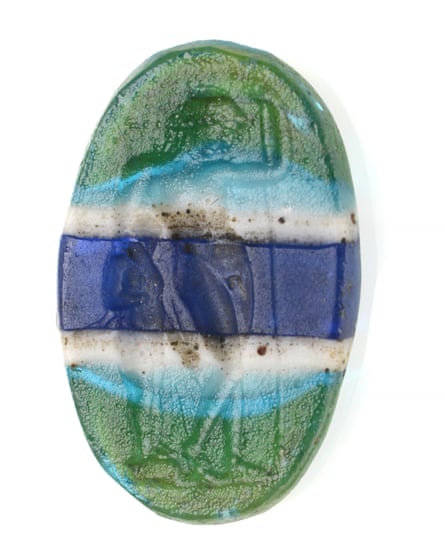
The London office of the Art Loss Register is located on a quiet backstreet, a short walk from St Paul’s Cathedral, denoted by a name on the doorbell written on white paper and attached with sticky tape. Inside, apologies are offered for the bracing temperature; the boiler has just packed up. In the middle of the carpet, a bucket collects water that is dripping from the ceiling. One is reminded of Slow Horses, the Apple TV series about a band of MI5 misfits who are exiled to the insalubrious surroundings of Slough House, but who find themselves solving cases of huge national importance.
So it was that the company was called to assist with the British Museum case, joining an “international panel of experts” to help investigate the thefts. The Art Loss Register claims to operate “the world’s largest private database of lost, stolen and looted art, antiques and collectibles”. In a meeting room next to bookshelves stacked with volumes about art crime and the odd Jeffrey Archer novel, founder Julian Radcliffe recounts how the Art Loss Register began, more than 30 years ago. In Radcliffe’s telling, his previous line of work included conducting kidnap negotiations for Lloyd’s of London. During a conversation with a director at Sotheby’s auction house, he recalls being asked: “Can’t you do something about stolen art?”
Radcliffe’s solution sounds unremarkable: a database. Victims of art theft would register their losses, while the art trade would use the database for due diligence, checking the provenance of items that came up for sale. Initially, the art world resisted. As Radcliffe recalls, dealers and auction houses each blamed the other for illicit sales, saying they had little use for a database of missing art. But Radcliffe persisted. For decades, he covered the company’s losses out of his own pocket. (The Art Loss Register’s latest accounts note that the company remains a going concern due to Radcliffe’s financial support; Radcliffe says the company has been profitable for the past three years.)
Gradually, the art world came around. There are now more than 700,000 items listed on the Art Loss Register, double the number from 10 years ago. The publicity gleaned from high-profile recoveries helped secure the register’s reputation. Alongside provenance checks, Radcliffe proved adept at negotiating the return of stolen works, such as a Cézanne painting, Bouilloire et Fruits, which sold in 2019 for $59m.
A book has been produced, Lost Art: The Art Loss Register Casebook Volume One, detailing some of Radcliffe’s more thrilling exploits, travelling the world for clandestine meetings in airports and going undercover in underworld auction houses. Its pages contain oblique references to the controversies that have swirled around Radcliffe’s methods: “The ALR’s rulebook was written in the middle of a complex and fast-moving game, often against a slippery opposition… What norms of behaviour apply against a criminal opposition?” And: “The commercial interests of the ALR and the objectives of formal law enforcement are not always perfectly aligned.”
after newsletter promotion
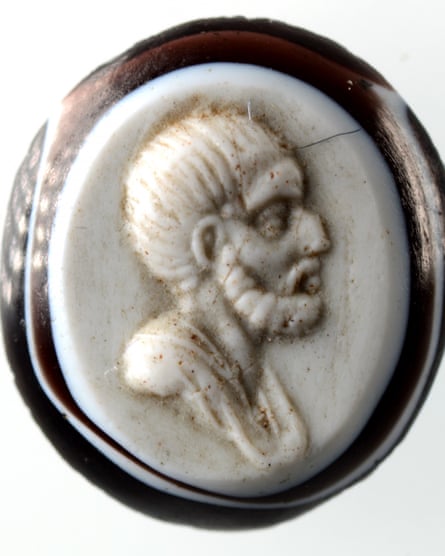
Law enforcement officers have offered blunter assessments. In 2014, a French detective told the Times: “Radcliffe ruins everything.” Critics point to the Art Loss Register’s habit of paying rewards for information or returns, a practice they say incentivises theft. Radcliffe acknowledges his work occasionally involves grey areas and that the police have not always appreciated his efforts, although he says that’s changing. “They’re now beginning to recognise what we have been saying for a long time, which is, if the police cannot provide support to victims of crime, then they’ve got to find somebody else who can.”
It seems reasonable to ask how a museum could fail to notice that so many of its items were missing. Part of the problem was no doubt the size of the collection. The British Museum holds around 8m objects, many of which will never go on public display. “Anybody who thinks about it for more than five minutes is going to know you’re not going to be able to sell something you stole from the wall of a museum,” says Erin L Thompson, professor of art crime at the John Jay College of Criminal Justice at the City University of New York. “The slightly smarter thief will steal from storage.”
So, low-value and lower-profile items are easier to remove. They’re also easier to sell. It’s alleged that many of the British Museum’s missing items were sold online for just a few pounds. But do antiquities really change hands on eBay for less than the price of a takeaway? “Go look for yourself,” says Thompson. A search for “Greek antique” produces more than 15,000 results. There’s an “ancient bronze sword” on sale for £8.27, plus VAT and postage. An “ancient Greek bronze ring, circa 300BC” is advertised for £20. To the untrained eye, it’s impossible to know whether this is trash masquerading as treasure, or priceless antiquities being sold for a pittance. Maybe the buyers and sellers don’t even know. As Thompson says: “People don’t tend to ask questions when buying things on eBay.”
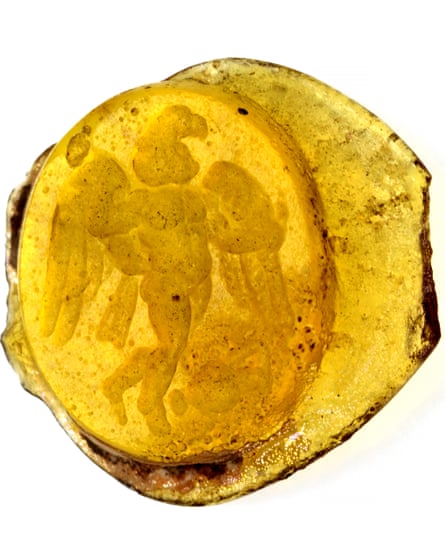
Asked about eBay’s reported role in the British Museum case, a spokesperson declined to answer specific questions, but said the sale of illicit antiques is prohibited on the platform and encouraged users to contact law enforcement about any suspicious listings: “With regards to the theft of items from the British Museum, our dedicated law enforcement liaison team has been in close contact with the Met for several months, and is supporting the investigation into this case.”
Christopher A Marinello takes a dim view of some online auction houses and the role they play in the illicit art trade. “They will sell a dead dog if they think they can get a commission out of it,” says the former New York lawyer, now head of Art Recovery International. Marinello takes a similar view of many other institutions and individuals he sees as enablers of criminality. “I don’t trust people,” he says. “I deal with horrible, horrible people in the art world and the first thing they do when something is stolen is they make it disappear. I can point to a million cases where a dealer is told something is stolen and they will simply give the piece back to some mysterious figure who brought it to the shop and we’ll never see it again.”
Marinello served as general counsel at the Art Loss Register for several years before leaving to set up his rival firm, subsequently declaring he had become uncomfortable with the register’s methods. Like others in the field, he has his own set of stories about recoveries made in bizarre circumstances. In 2008, Marinello stood on a New York street corner to recover a multimillion dollar Paul Delvaux painting, stolen 40 years earlier, which was handed to him in a bin bag from the lowered window of a blacked-out Mercedes. He says: “That was quite unusual, even for what I do.”
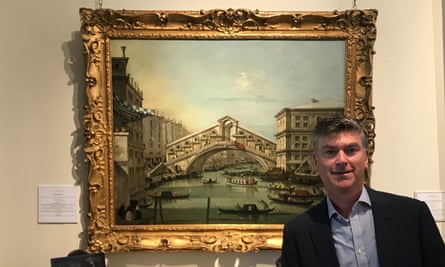
Marinello believes the British Museum is making a crucial mistake: details of only a small number of its missing items have been made public. Ordinarily, Marinello says that makes sense. That way, “We’re the first ones to know if something is stolen – so we have a little bit of a head start.” But with so many missing items, and buyers who may have no idea what they’re holding, Marinello says the rules have changed and that members of the public could have bought items not knowing they may have been stolen. “It’s unfair to play gotcha with the public.”
That the museum has not shared the details of every item it believes is missing might be strategic – or it may simply not know exactly what’s gone. Many of the items in its collection are not properly documented, which presents a problem. “To recover stolen artwork you have to be able to identify it,” says Marinello. “Items they have no record of are as good as gone.”
The British Museum, which has appointed the National Portrait Gallery head, Nicholas Cullinan, as its new director, may count on some goodwill from those who turn out to be holding items from its collection. Donna Yates, an associate professor at Maastricht University and an expert in the illicit antiquities trade, says: “Collectors of small ancient items are, by and large, people who care deeply for the past and don’t want to be found to be holding stolen goods. But that depends on reaching these people and appealing to them.” That’s time-consuming work. “To what extent should the police spend time and money tracking down hundreds of low-value stolen things?”
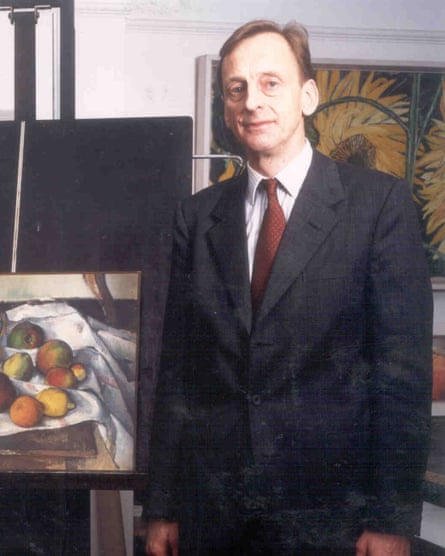
So far, the British Museum says it has retrieved more than 350 of the items it knew to be missing. Often the items were returned by art dealers who bought them, reported the New York Times recently. Another 300 items are said to have been identified. Now, several of the recovered items are on show at the museum, in an exhibition titled Rediscovering Gems that runs until June.
Retrieving so many items is a promising start, but it is now more than a year since the museum began its investigation in earnest. What about the other objects? Marinello says slow progress is not unusual: “I’ve had cases in the UK drag out for years. That’s how these things will be recovered. It could be decades before they show up again.” Given the number of items said to be missing, James Ratcliffe, general counsel and director of recoveries at the Art Loss Register, says: “Everyone is realistic that the chances of everything being recovered are nil.” How many might be found? “I would hope that, within the next five years, half will be recovered.”
While the search for the missing items continues, the museum also faces questions about how they disappeared in the first place. René Allonge, the art detective at the Berlin police, says enquiries must involve “a critical look at the internal procedures within the museum”, including “what information those responsible at the museum had about the thefts before the case became public knowledge and how they dealt with it. That will now be the part of the British investigation.”
The Met declined to give an update on the case, but in many ways it seems as if it’s the British Museum that is on trial. In the wake of the losses, Greek culture minister Lina Mendoni called for the Parthenon Sculptures to be returned and said: “When this happens from within, beyond any moral and criminal responsibility, a major question arises regarding the credibility of the museum organisation itself.”
In December, the British Museum revealed some of the findings of a review into how the losses happened, pledging to comprehensively document its collection within the next five years and introduce new security measures. Will that be enough? Reputation matters a great deal in the art world – and an institution that styles itself as safekeeper of the world’s treasures needs to prove it can uphold that promise. Announcing the outcome of its internal investigations, Osborne said: “This review shows the British Museum is putting our own house in order.” The museum’s detractors may take more persuading.
